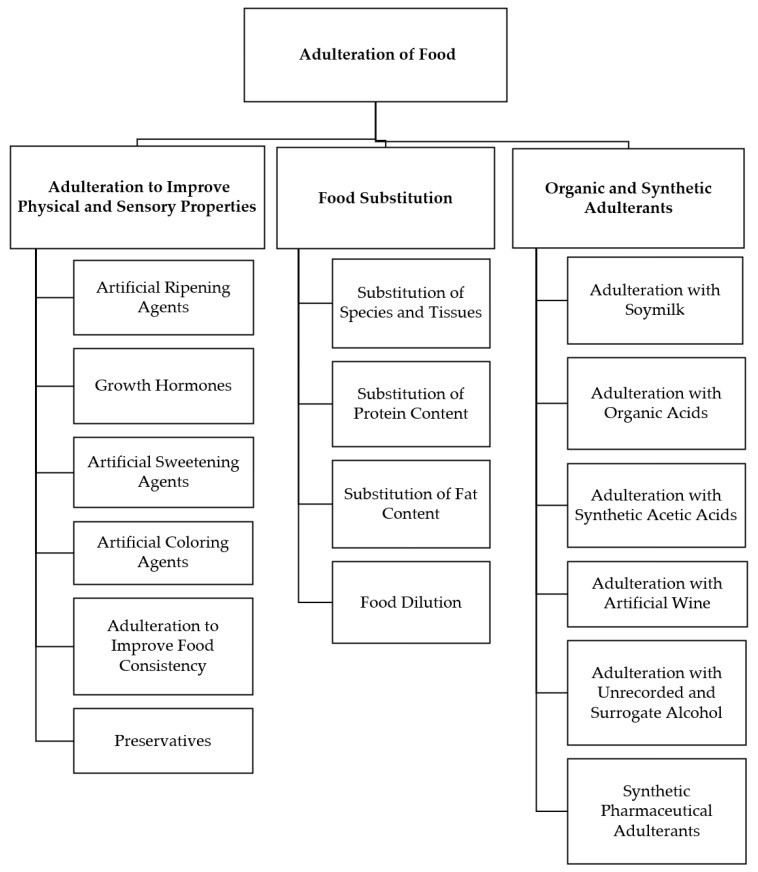Food adulteration is a serious issue impacting global health and economies. This article provides an in-depth look at what constitutes food adulteration, its various forms, the harmful effects on health, and strategies for prevention.
Introduction: Understanding Food Adulteration
Food adulteration refers to the deliberate contamination of food products, diminishing their quality. It is a form of food fraud, driven by the desire for financial gain. This can involve altering a food’s composition or misrepresenting its origin or ingredients. The consequences of food adulteration range from mild health issues to severe illnesses and economic losses. It’s also known as Economically Motivated Adulteration (EMA).
Food adulteration has been a persistent problem for centuries, fueled by factors such as the perishable nature of food, complex supply chains, and economic incentives. The increasing consumer demand for affordable food options can exacerbate the problem. The lack of stringent regulations and enforcement further contributes to this issue.
 Forms of intentional food adulteration
Forms of intentional food adulteration
Major forms of food adulteration, including substitution, addition of toxic substances, and mislabeling, all driven by economic gain.
Types of Food Adulteration
Food adulteration manifests in various forms, each with its unique characteristics and potential health risks.
Improving Physical and Sensory Properties
This involves altering the appearance, taste, or shelf life of food to make it more appealing to consumers.
Artificial Ripening Agents
Chemicals like ethylene and calcium carbide are used to artificially ripen fruits, often before they are naturally mature. While speeding up the process, these agents can pose health risks.
Growth Hormones
Farmers sometimes use growth hormones, like gibberellic acid, to increase the size and color of fruits and vegetables. While intended to boost yields, these hormones can have unintended health consequences.
Artificial Sweetening Agents
To enhance the sweetness of foods, artificial sweeteners like saccharin are sometimes injected into fruits or added to fruit juices. This can deceive consumers about the natural sugar content and nutritional value of the product.
Artificial Coloring Agents
Synthetic dyes, such as Metanil yellow and Sudan dyes, are added to foods to make them more visually appealing. However, these dyes have been linked to various health problems, including cancer.
Improving Food Consistency
Adulterants like detergents, along with oil and fat, may be added to dairy products to improve their consistency. This practice is often driven by a desire to mask the effects of dilution or substandard ingredients.
Preservatives
Preservatives like formaldehyde are used to extend the shelf life of food products. However, excessive consumption of formaldehyde can lead to disturbances in the nervous system, kidneys, liver, and lungs.
Food Substitution
This involves replacing a high-value ingredient with a cheaper alternative, without informing the consumer.
Substitution of Species and Tissue
- Fishery Substitution: Replacing expensive fish species with cheaper ones.
- Substitution in Meat Products: Using pork, which is cheaper, instead of other meats.
- Substitution in Milk Products: Substituting cow’s milk for more expensive milk like sheep or goat milk.
- Coffee Substitution: Mixing costly Arabica coffee beans with cheaper Robusta beans.
Substitution of Protein Content
- Protein Substitution in Meat: Adding animal protein, like egg, gluten, and porcine gelatin, to meat products to increase the apparent protein content.
- Protein Substitution in Milk: Adding melamine, urea, and whey to milk to increase its apparent protein content.
Substitution of Fat Content
- Fat Substitution in Milk: Replacing milk fat with cheaper vegetable or animal fats.
- Substitution of Oil and Fat Content in Oil and Fat: Adulterating extra virgin olive oil with cheaper oils.
Food Dilution
Adding water or other liquids to increase the volume of a product, such as milk or honey.
Organic and Synthetic Adulterants
This involves the addition of harmful chemicals to food products.
Adulteration with Soymilk
Soymilk can be added to cow milk and buffalo milk in the preparation of different dairy products.
Adulteration with Organic Acids
Organic acids, such as malic acid, are added to apple juice concentrate to increase commercial value
Adulteration with Synthetic Acetic Acids
Synthetic acetic acid is produced from non-biological origins obtained from either petroleum derivatives or by pyrolysis of wood.
Adulteration with Artificial Wine
Some adulterated wines are called artificial wine that consists of components organoleptically perceived as grape wine.
Adulteration with Unrecorded and Surrogate Alcohol
Alcohols that are not produced for human consumption, such as medicinal alcohol, disinfectant alcohol, denatured alcohol, synthetic alcohol, and other industrial alcohols, are often added to alcoholic beverages to increase their alcohol content
Synthetic Pharmaceutical Adulterants
The addition of synthetic pharmaceutical ingredients in dietary supplements to boost the desired effect on the human body
Fraud and Mislabeling
Misrepresenting the origin, quality, or ingredients of a food product. Expensive honey, such as pine, thyme, orange blossom, chestnut, heather, manuka, acacia, litchi, and linden, are frequently reported for mislabeling with respect to botanical origin
An example of Food Fraud.
Health Impacts of Food Adulteration
The consumption of adulterated food can have serious health consequences.
- Artificial Ripening Agents: Can be carcinogenic.
- Artificial Coloring Agents: Can be carcinogenic and genotoxic.
- Melamine: Can cause renal failure and kidney stones.
- Formaldehyde: Can cause disturbances in the nervous system, kidneys, liver, and lungs.
- Oil Substitution: Can result in gall bladder cancer and liver damage.
Preventing Food Adulteration
Combating food adulteration requires a multi-faceted approach.
- Stringent Regulations: Implementing and enforcing strict food safety laws.
- Advanced Detection Techniques: Developing and using advanced technologies to detect adulterants.
- Regular Inspections: Conducting regular inspections of food processing facilities and markets.
- Consumer Awareness: Educating consumers about the risks of food adulteration and how to identify adulterated products.
- Supply Chain Transparency: Ensuring transparency and traceability throughout the food supply chain.
- Collaboration: Fostering collaboration between scientists, policymakers, and food industry stakeholders.
Conclusion: Ensuring Food Safety and Quality
Food adulteration poses a significant threat to public health and economic stability. By understanding the types of adulteration, implementing preventive measures, and promoting collaboration, we can work towards ensuring food safety and quality for all. The safety of our food supply is a shared responsibility that requires the active participation of governments, industries, and consumers.
References
References from the original article.

